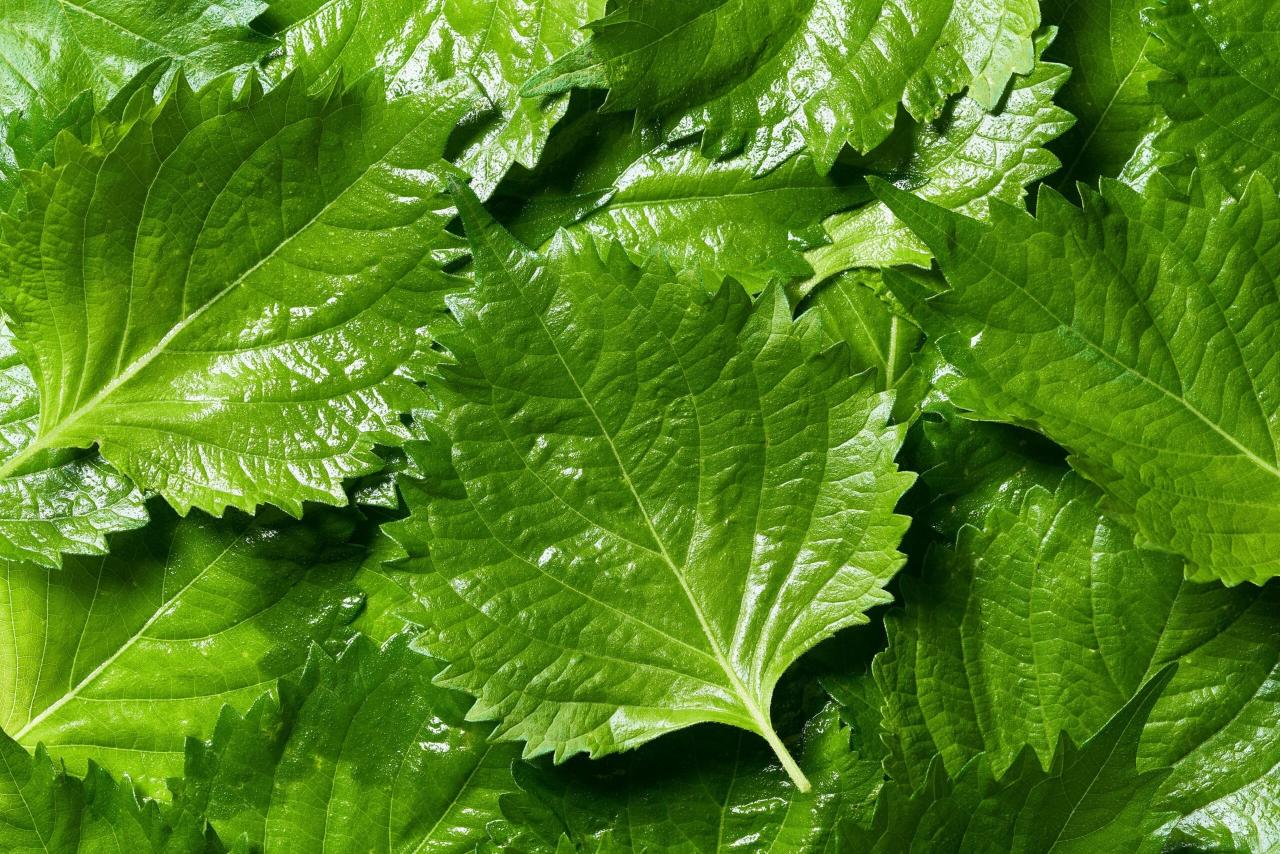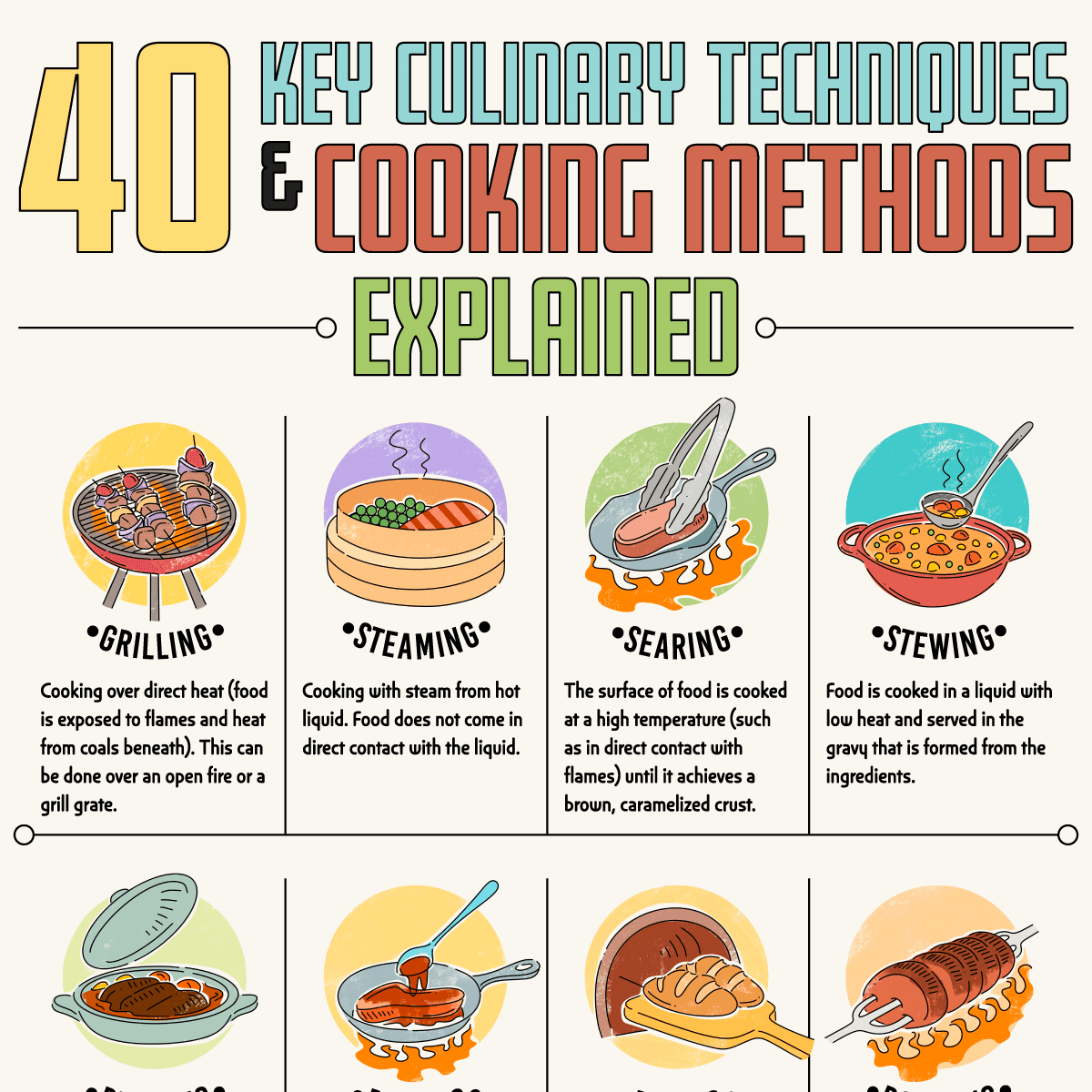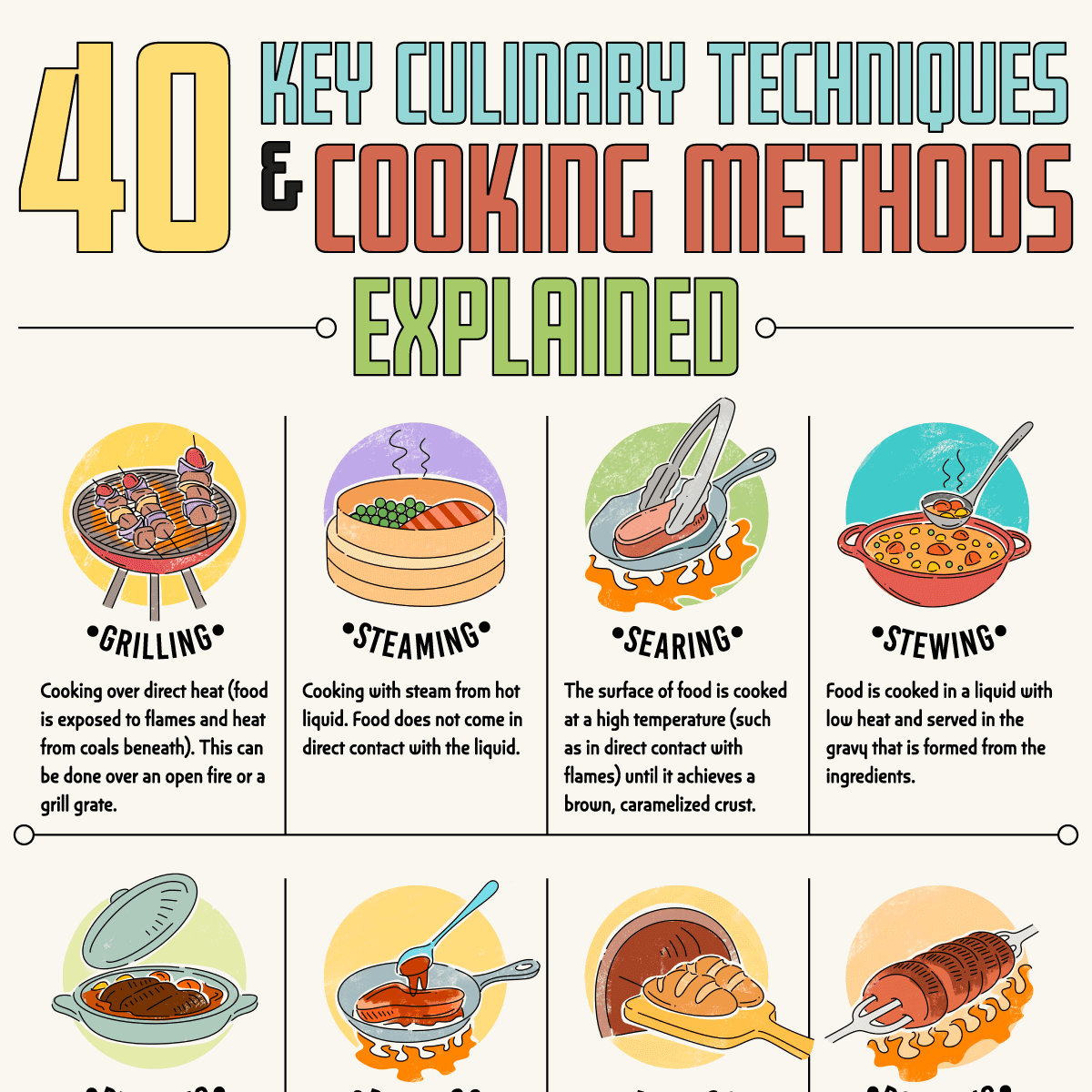How to Cook with Perilla Leaf: Essential Tips for Creating Amazing Dishes – Perilla leaf, also known as shiso, is a versatile herb with a unique flavor that can elevate your culinary creations. From its origins in East Asia to its growing popularity worldwide, perilla leaf has captivated taste buds with its distinct aroma and refreshing taste.
This aromatic herb, often used in Asian cuisines, offers a burst of flavor that can transform simple dishes into culinary masterpieces. Beyond its delightful taste, perilla leaf boasts impressive nutritional benefits, packed with antioxidants and potential health advantages.
This comprehensive guide will delve into the world of perilla leaf, providing essential tips and techniques for incorporating this flavorful herb into your cooking. From selecting the freshest leaves to exploring innovative culinary applications, we’ll guide you through the process of creating dishes that showcase the unique essence of perilla leaf.
Introduction to Perilla Leaf

Perilla leaf, scientifically known asPerilla frutescens*, is a vibrant herb native to East Asia, particularly China, Japan, and Korea. It is widely used in traditional Asian cuisines, adding a unique and complex flavor to various dishes. Perilla leaves are known for their distinct aroma and taste, which can be described as a blend of mint, basil, and citrus, making them a versatile ingredient that complements a wide range of culinary creations.
Flavor Profile and Culinary Uses
Perilla leaves offer a distinctive flavor profile that is both refreshing and pungent. The leaves can be enjoyed fresh, dried, or pickled, adding a unique twist to different cuisines. They are commonly used in Asian dishes, such as Korean
- bibimbap* (mixed rice), Japanese
- sushi*, and Chinese
- dim sum*. The leaves are often used as a garnish, adding a burst of flavor and color to the dish. They can also be incorporated into stir-fries, soups, and sauces, providing a unique depth of flavor.
Nutritional Benefits of Perilla Leaf
Perilla leaves are rich in antioxidants, which are compounds that protect cells from damage caused by free radicals. These antioxidants contribute to overall health and well-being, potentially reducing the risk of chronic diseases. The leaves are also a good source of vitamins and minerals, including vitamin A, vitamin C, and calcium.
Additionally, perilla leaves contain omega-3 fatty acids, which are known for their heart-healthy properties.
Selecting and Storing Perilla Leaf
Choosing the right perilla leaves is crucial for achieving the best flavor and texture in your dishes. Fresh perilla leaves are ideal, but knowing how to select and store them properly is essential to ensure they retain their vibrant aroma and freshness.
Selecting Fresh Perilla Leaves
When choosing fresh perilla leaves, consider these factors:
- Color:Look for leaves with a deep, vibrant green color. Avoid leaves that are yellowing or have brown spots, as these indicate they are past their prime.
- Texture:Perilla leaves should be firm and crisp to the touch. Avoid leaves that are wilted or limp, as they will likely be less flavorful.
- Aroma:Perilla leaves have a distinctive, slightly minty aroma. If the leaves have a weak or musty smell, they may not be fresh.
Storing Perilla Leaves
Proper storage is essential for maintaining the freshness and flavor of perilla leaves.
- Refrigeration:Store perilla leaves in a plastic bag or airtight container in the refrigerator.
- Moisture:To prevent wilting, lightly dampen a paper towel and place it in the bag or container with the leaves.
- Duration:Perilla leaves can stay fresh in the refrigerator for up to a week if stored properly.
Alternative Forms of Perilla Leaf
While fresh perilla leaves are the most common form, other options are available:
- Dried Leaves:Dried perilla leaves can be used in various dishes, including soups, stews, and marinades. They have a more concentrated flavor than fresh leaves.
- Perilla Oil:Perilla oil is extracted from the seeds and has a nutty, slightly peppery flavor. It can be used for cooking, salad dressings, and marinades.
- Perilla Seeds:Perilla seeds are a good source of protein and omega-3 fatty acids. They can be roasted and eaten as a snack or ground into a powder for use in various dishes.
Culinary Applications of Perilla Leaf: How To Cook With Perilla Leaf: Essential Tips For Creating Amazing Dishes
Perilla leaf, with its unique flavor and aroma, adds a distinct dimension to various culinary creations. From salads and stir-fries to soups and marinades, this versatile herb finds its place in a multitude of dishes, enriching their taste and presentation.
Diverse Culinary Applications
The following table illustrates the diverse applications of perilla leaf in different culinary preparations:
Dish Type |
Perilla Leaf Usage |
Flavor Profile |
Serving Suggestions |
|---|---|---|---|
Salads |
Chopped perilla leaves are added to salads for a refreshing, slightly spicy, and tangy flavor. They can be combined with other leafy greens, vegetables, and proteins. |
Perilla leaves impart a unique combination of minty, citrusy, and slightly spicy notes to salads, balancing the sweetness and bitterness of other ingredients. |
Serve salads with a light vinaigrette or a sesame dressing for a balanced and flavorful experience. |
Stir-fries |
Perilla leaves are added towards the end of cooking to retain their vibrant color and delicate flavor. They can be used as a garnish or incorporated into the stir-fry for a burst of freshness. |
The leaves add a refreshing and slightly spicy element to stir-fries, complementing the savory flavors of other ingredients. |
Pair stir-fries with steamed rice, noodles, or tofu for a complete and satisfying meal. |
Soups |
Perilla leaves can be added to soups for a unique flavor and aroma. They can be chopped and added directly to the soup or used as a garnish. |
Perilla leaves infuse soups with a distinct minty, citrusy, and slightly spicy flavor, enhancing the overall taste and aroma. |
Serve soups with a dollop of sour cream, a sprinkle of chopped chives, or a drizzle of sesame oil for added flavor and texture. |
Marinades |
Perilla leaves can be used to create flavorful marinades for meats, fish, and tofu. They can be finely chopped and combined with other ingredients like soy sauce, garlic, and ginger. |
Perilla leaves impart a complex flavor profile to marinades, adding a combination of minty, citrusy, and slightly spicy notes. |
Marinated meats, fish, or tofu can be grilled, baked, or pan-fried for a flavorful and aromatic dish. |
Sauces |
Perilla leaves can be used to create unique sauces for various dishes. They can be blended with other ingredients like soy sauce, vinegar, and chili flakes for a spicy and tangy sauce. |
Perilla leaves add a distinct minty, citrusy, and slightly spicy flavor to sauces, complementing the taste of various dishes. |
Sauces can be used as a dipping sauce for dumplings, spring rolls, or as a finishing touch for noodles and rice dishes. |
Versatility in Various Cuisines
Perilla leaf holds a prominent position in various cuisines, particularly in Asian culinary traditions. In Korean cuisine, perilla leaf is commonly used as a garnish, a flavoring agent in salads, and as a key ingredient in the popular dish “kkaennip muchim” (perilla leaf salad).
In Japanese cuisine, perilla leaf is often used as a garnish for sushi, tempura, and other dishes. Its distinct flavor and aroma are also incorporated into various Japanese pickles and sauces.
Cooking with Perilla Leaf
Perilla leaves, with their unique flavor and vibrant color, add a distinctive touch to various dishes. To unlock their full potential, understanding the nuances of cooking with them is essential. This section explores essential tips for incorporating perilla leaves into your culinary creations, ensuring a harmonious blend of flavors and textures.
Just like you can propagate your own roses and save money with this simple technique , you can also grow your own perilla leaves. This versatile herb adds a unique flavor and aroma to your dishes, making them more complex and interesting.
Whether you’re grilling, stir-frying, or even making a refreshing summer salad, perilla leaves will elevate your culinary creations to new heights.
Essential Tips for Cooking with Perilla Leaf, How to Cook with Perilla Leaf: Essential Tips for Creating Amazing Dishes
Perilla leaves are delicate and can wilt quickly, so proper handling is crucial. To ensure their flavor and vibrant color are preserved, follow these essential tips:
- Wash perilla leaves gently under cold running water, removing any dirt or debris. Pat them dry with a clean kitchen towel or paper towels. Avoid excessive rubbing, as this can damage the leaves.
- The timing of adding perilla leaves to dishes is crucial. Their delicate flavor can easily be overpowered by prolonged cooking. Therefore, add them towards the end of cooking, allowing them to infuse the dish with their aroma and vibrant color.
- Perilla leaves have a strong, distinct flavor that can dominate other ingredients if not balanced properly. Use them judiciously, adding small amounts initially and adjusting as needed. Consider pairing them with complementary flavors like ginger, garlic, soy sauce, sesame oil, or citrus.
- To preserve the vibrant color and aroma of perilla leaves during cooking, avoid prolonged exposure to high heat. Gentle cooking methods like stir-frying, steaming, or adding them at the end of cooking are ideal.
Creating a Simple Perilla Leaf-Infused Sauce
A simple perilla leaf-infused sauce can elevate the flavor of many dishes. This step-by-step guide demonstrates the process:
- Gather fresh perilla leaves, garlic cloves, soy sauce, sesame oil, and a pinch of sugar.
- Finely chop the perilla leaves and garlic cloves. The finer the chop, the more readily the flavors will infuse the sauce.
- Combine the chopped perilla leaves, garlic, soy sauce, sesame oil, and sugar in a small bowl.
- Stir the ingredients thoroughly until they are well combined. Taste and adjust the seasoning as needed.
- Use the sauce immediately or store it in the refrigerator for later use. The sauce will keep for a few days, but its flavor will be best when freshly made.
This simple sauce is versatile and can be used to enhance the flavor of stir-fries, noodles, dumplings, or grilled meats.
Recipes Featuring Perilla Leaf

Perilla leaf, with its unique flavor and aroma, adds a distinctive touch to various culinary creations. Its versatility allows it to be incorporated into diverse dishes, from simple salads to complex stir-fries. Here are three unique recipes featuring perilla leaf as a key ingredient.
Perilla Leaf Salad with Sesame Dressing
This refreshing salad showcases the delicate flavor of perilla leaf with a tangy sesame dressing. The combination of fresh vegetables and herbs creates a balanced and flavorful dish. Ingredients:
- 1 cup perilla leaves, washed and drained
- 1 cup mixed greens (such as spinach, arugula, or lettuce)
- 1/2 cup cherry tomatoes, halved
- 1/4 cup thinly sliced red onion
- 1/4 cup toasted sesame seeds
For the dressing
2 tablespoons soy sauce
1 tablespoon rice vinegar
1 tablespoon sesame oil
1 tablespoon honey
1 teaspoon toasted sesame seeds
1/2 teaspoon ground black pepper
Preparation:
- In a large bowl, combine the perilla leaves, mixed greens, cherry tomatoes, and red onion.
- To make the dressing, whisk together the soy sauce, rice vinegar, sesame oil, honey, toasted sesame seeds, and black pepper in a small bowl.
- Pour the dressing over the salad and toss to coat.
- Sprinkle with toasted sesame seeds and serve immediately.
Image:A colorful salad with a mix of greens, red onion, cherry tomatoes, and perilla leaves, drizzled with a creamy sesame dressing and sprinkled with toasted sesame seeds. Tips and Variations:
- To add a spicy kick, include a pinch of red pepper flakes in the dressing.
- For a vegan option, replace honey with maple syrup.
- Feel free to experiment with different vegetables and herbs based on your preference.
Korean-Style Spicy Perilla Leaf Wrap (Ssambap)
Ssambap is a popular Korean dish that involves wrapping various ingredients in perilla leaves for a flavorful and satisfying bite. Ingredients:
- 1 cup perilla leaves, washed and drained
- 1 cup cooked rice
- 1/2 cup thinly sliced marinated beef
- 1/4 cup kimchi, chopped
- 1/4 cup pickled radish, thinly sliced
- 1/4 cup gochujang (Korean chili paste)
- 1 tablespoon sesame oil
- 1 tablespoon soy sauce
- 1 teaspoon garlic, minced
- 1 teaspoon ginger, minced
Preparation:
- In a small bowl, combine the gochujang, sesame oil, soy sauce, garlic, and ginger.
- Place a perilla leaf on a plate.
- Add a spoonful of cooked rice to the center of the leaf.
- Top with marinated beef, kimchi, and pickled radish.
- Drizzle with the gochujang sauce.
- Fold the sides of the perilla leaf over the filling and enjoy.
Image:A close-up shot of a perilla leaf wrap filled with cooked rice, marinated beef, kimchi, and pickled radish, drizzled with gochujang sauce. Tips and Variations:
- Feel free to customize the filling with other ingredients such as tofu, vegetables, or seafood.
- To add a spicy kick, add a pinch of red pepper flakes to the gochujang sauce.
- For a vegetarian option, omit the marinated beef and add more vegetables.
Perilla Leaf and Shrimp Stir-Fry
This stir-fry combines the fragrant flavor of perilla leaf with the sweetness of shrimp and the savory taste of vegetables. Ingredients:
Mastering the art of cooking with perilla leaf is all about understanding its versatility. From adding a unique flavor to stir-fries to creating vibrant sauces, this herb offers a world of culinary possibilities. To truly unlock its potential, it’s essential to explore the diverse ways perilla can enhance your dishes.
For a deeper dive into the world of this remarkable herb, check out Perilla Leaf Magic: How to Enhance Your Cooking with This Unique Herb. Armed with this knowledge, you’ll be able to confidently incorporate perilla into your cooking, creating delicious and memorable meals.
- 1 cup perilla leaves, washed and drained
- 1 pound shrimp, peeled and deveined
- 1 cup broccoli florets
- 1/2 cup sliced carrots
- 1/4 cup chopped onion
- 2 cloves garlic, minced
- 1 tablespoon vegetable oil
- 1 tablespoon soy sauce
- 1 teaspoon rice vinegar
- 1/2 teaspoon sugar
- 1/4 teaspoon ground black pepper
Preparation:
- Heat the vegetable oil in a large skillet or wok over medium heat.
- Add the shrimp and cook for 2-3 minutes until pink and cooked through.
- Remove the shrimp from the skillet and set aside.
- Add the broccoli, carrots, and onion to the skillet and cook for 5 minutes, or until tender-crisp.
- Add the garlic and cook for 1 minute, until fragrant.
- Return the shrimp to the skillet.
- Add the perilla leaves, soy sauce, rice vinegar, sugar, and black pepper.
- Toss to combine and cook for 1 minute, until the perilla leaves are wilted.
- Serve immediately over rice.
Image:A sizzling stir-fry with shrimp, broccoli, carrots, onion, and perilla leaves, all coated in a savory sauce. Tips and Variations:
- For a more flavorful stir-fry, add a pinch of red pepper flakes or a tablespoon of chili paste.
- Feel free to substitute other vegetables based on your preference.
- For a vegetarian option, replace the shrimp with tofu or tempeh.
Recipes Featuring Perilla Leaf
Recipe Name |
Cuisine |
Main Ingredients |
Serving Size |
|---|---|---|---|
Perilla Leaf Salad with Sesame Dressing |
Asian |
Perilla leaves, mixed greens, cherry tomatoes, red onion, sesame seeds, soy sauce, rice vinegar, sesame oil, honey |
2 servings |
Korean-Style Spicy Perilla Leaf Wrap (Ssambap) |
Korean |
Perilla leaves, cooked rice, marinated beef, kimchi, pickled radish, gochujang, sesame oil, soy sauce, garlic, ginger |
4 servings |
Perilla Leaf and Shrimp Stir-Fry |
Asian |
Perilla leaves, shrimp, broccoli, carrots, onion, garlic, vegetable oil, soy sauce, rice vinegar, sugar, black pepper |
2 servings |
Perilla Leaf and Tofu Noodle Soup |
Japanese |
Perilla leaves, tofu, noodles, dashi, soy sauce, mirin, ginger |
2 servings |
Perilla Leaf and Pork Dumplings |
Chinese |
Perilla leaves, pork, ginger, garlic, soy sauce, rice wine, scallions, wonton wrappers |
4 servings |
Epilogue
Whether you’re a seasoned chef or a home cook seeking culinary inspiration, mastering the art of cooking with perilla leaf unlocks a world of flavor possibilities. From adding a touch of freshness to salads to infusing sauces with vibrant aromas, perilla leaf has the power to transform your dishes into culinary masterpieces.
By embracing the tips and techniques Artikeld in this guide, you can unlock the full potential of this versatile herb and create dishes that tantalize your taste buds and impress your guests.
FAQ Overview
What does perilla leaf taste like?
Perilla leaf has a unique flavor profile that is often described as a combination of mint, basil, and citrus. It can be slightly peppery, with a hint of sweetness.
Where can I find perilla leaf?
Perilla leaf is available at Asian grocery stores, specialty markets, and some regular supermarkets, especially in areas with large Asian populations. You can also often find it at farmers’ markets.
How long does perilla leaf last?
Fresh perilla leaf will last for about a week in the refrigerator if stored properly. To store, wrap the leaves in a damp paper towel and place them in a plastic bag.
Can I use perilla leaf in place of basil?
While perilla leaf and basil share some similarities in flavor, they are distinct herbs. Perilla leaf has a more complex flavor profile, and it can be used in place of basil in some dishes, but it may not be a perfect substitute.
